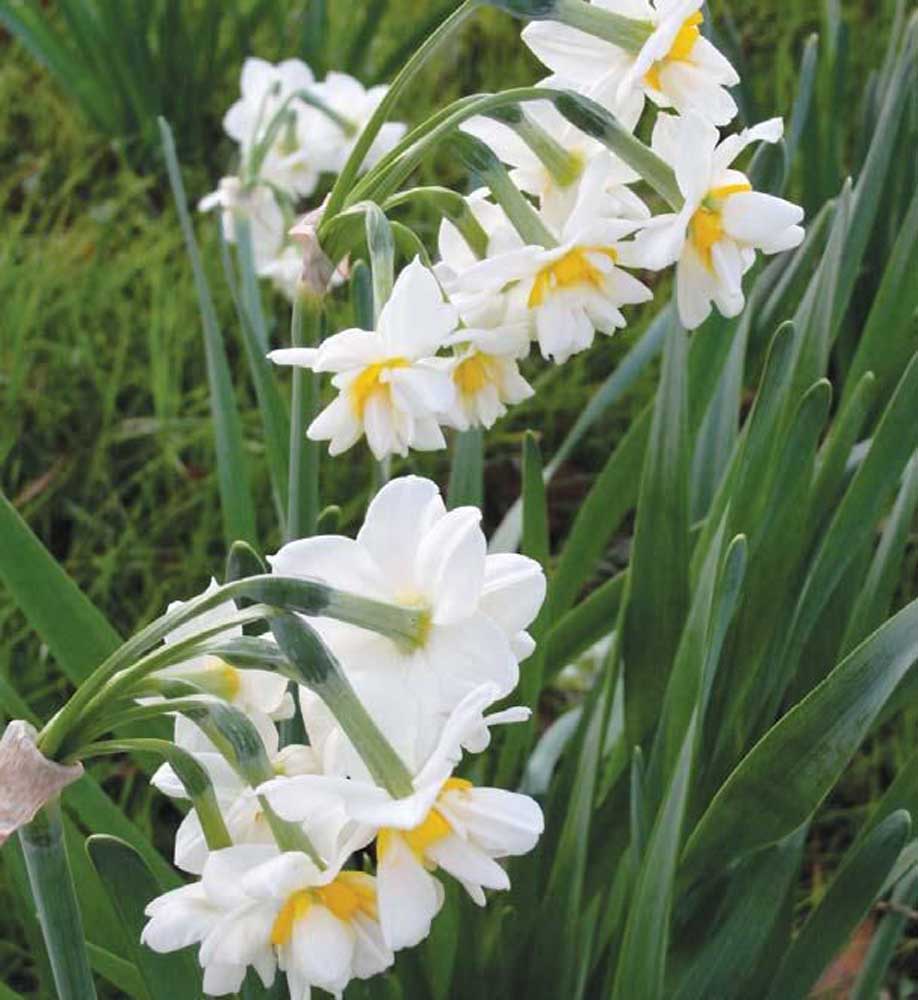Blooming of narcissus is symbolic of coming Southern spring
Published 2:20 am Thursday, January 4, 2018

- DOUBLE CHINESE sacred lilies are occasionally found blooming in East Texas landscapes but are more commonly grown indoors for the holidays.
Before the latest hard freeze, my paperwhites (Narcissus papyraceus) were in full bloom. Perhaps no fl oral symbol epitomizes the impending arrival of a Southern spring as does the blooming of our assorted narcissus species.
The word narcissus is derived from the Greek word narke, meaning numbness or stupor. Some attribute the naming of the flower to its narcotic fragrance, while others debate that it is associated with the poisonous nature of the bulbs, a built-in defense against nibbling rodents. In classical mythology it was the young lad Narcissus who was so enamored with himself that he stared at his reflection in a pool of water until he eventually turned into his namesake flower.
Most narcissus species are natives of southern France, Spain and the surrounding Mediterranean areas. This explains their love of our dry summers and wet winters. Many species have been cultivated for hundreds, even thousands of years, including the iconic flower celebrating the Chinese New Year, the Chinese sacred lily (Narcissus tazetta chinensis), which comes in both a single and a double form.
The Chinese sacred lily was originally imported from southeastern China. In China, the flowers of these bulbs had a centuries-old association with New Year celebrations. In America, these iconic bulbs are often grown as they had long been grown in China — by placing them in shallow bowls filled with pebbles and water, just as paperwhite narcissus (N. papyraceus) are often grown. The frontier-era Chinese called their narcissus seui sin faa (water immortal flowers) in their melodic Cantonese dialect. The flowers are often known in English as “Chinese sacred lilies” or “joss flowers.”
One would think these flowers would be native somewhere within the vast region of China. It appears, however, that the ancestral stocks of these bulbs arrived in China from a region far to the west more than a thousand years ago. They may have been imported into China via the silk routes through central Asia, or they may have arrived via ancient Persian and Arab sea-trading routes between the Middle East and southern China. It is likely that bulbs were initially transported into China by both land and sea.
The ancestral stocks of Chinese sacred lily were imported into China sometime before the beginning of the Song Dynasty (960-1279 AD). Eventually, because they flower so early in southern China (at approximately the time of the lunar new year), the flowers became associated with New Year celebrations. A horticultural tradition developed around the production of the bulbs and the seasonal display of their flowers. Chinese sacred lily bulbs are often sold along with paperwhite narcissus in fall bulb catalogs. Unfortunately they are both rather tender and tend to get blasted down with cold winters here. They do return each year and about once a decade show their historic and fragrant holiday roots.
Greg Grant is the Smith County horticulturist for the Texas A&M AgriLife Extension Service. You can follow him on Facebook at Greg Grant Gardens, read his “Greg’s Ramblings” blog at arborgate.com or read his “In Greg’s Garden” in each issue of Texas Gardener magazine (texasgardener.com).






